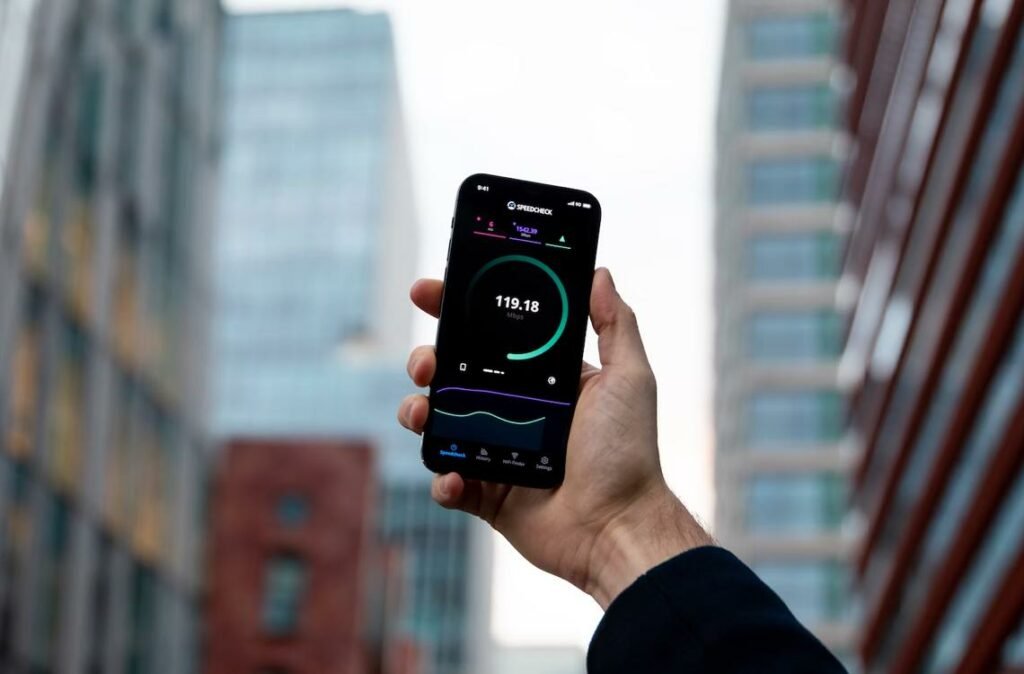There is a range of mobile network providers to select from, each offering different coverage options – so if you’re experiencing a lot of problems, maybe it’s time for a change. Determining the right one for you depends on your needs and usage habits – as well as saving money by paying less for data and calls. Taking time to do your research before choosing can save money in the form of reduced costs for calls and data usage.
Cellular networks transmit data over radio waves between a base station and mobile devices. Each mobile phone contains both a transmitter and receiver (known as transceiver). The transmitter sends out signals through its antenna while its receiver (transceiver) picks them up from towers. If enough signals reach them, continuous communication with towers may ensue while otherwise it will seek better signals in search for better reception.
Mobile network operators use base stations to enhance connectivity on their networks, typically located in high ground locations for maximum coverage across an expanse. To learn more, go here – https://mobilabonnement.com/dekningskart/ and read the additional articles attached on the site. To reach hard-to-reach areas they install picocells or microcells that boost signal strength in buildings or other structures to facilitate communication between mobile phones and the network.
5G technology offers even faster data speeds and can simultaneously connect multiple devices. While not yet widely available, 5G is expected to become increasingly accessible over time.
Most modern smartphones can be used on all major wireless networks. To make sure that your phone works on all carriers, check its specifications; some older models may require special adapters in order to function on certain networks.

How to Boost Your Mobile Coverage
Check Your Network
Cell signals can often be weak in certain rooms of a home or office due to construction materials like metal, concrete or low-E windows preventing reception of signals from cell towers nearby. If this is the case for you, taking steps such as moving away from metal-coated surfaces like windows may help improve connection: move closer to cell tower or find an option without metal/low-E glass surfaces in any of the building’s rooms (i.e. move outside to see if that improves it further).
If your cell phone works great outside but struggles indoors, Boost Mobile offers cell signal boosters as a cost-effective solution. These devices work by receiving the signal from your carrier and broadcasting it throughout your home or office to boost connectivity. To see if one might help, consult your carrier’s coverage maps or reach out to a store representative near you.
If your cellular service has been experiencing consistent problems, it could be related to the network itself. Reach out to your cellular provider as soon as possible in order to start troubleshooting; perhaps just need a new SIM card or setting adjustment.
Try Raising Your Phone
Cellular coverage is an integral component of daily life; from making calls and sending texts to uploading an Instagram photo. If you’re experiencing dropped calls or poor data performance, then one or more of these expert tips for improving mobile signal could help improve it significantly.
Before diagnosing any potential phone issues, first determine if they could be caused by your device itself. Check to see if its internal antenna is blocked by a case, or whether you may be holding your phone incorrectly. Also ensure no unneeded services are running in the background, using up battery and data usage.
Cellular signals can vary considerably from place to place, and certain rooms in your home or office may offer better connections than others. Try moving nearer a window or heading upstairs onto the roof; see if signal improvement occurs as you do so. Also use coverage maps provided by carriers to see if any issues exist in your area.
If your signal remains poor, switching carriers could be worth exploring as an option. Although drastic, switching is actually quite straightforward and you can keep your existing number intact. Signal boosters or repeaters can help amplify weak mobile signals in areas with weak reception.
Change Your SIM Card
Cellular connectivity is crucial, whether you’re calling, texting or uploading images onto Instagram. Without strong signals it can be hard to stay connected with those closest to us – however there are ways you can increase mobile coverage.
One of the easiest solutions is changing your SIM card. Your SIM card serves as your ticket into cellular networks and contains important data like your phone number; if your phone is having issues connecting, this could be due to an outdated or damaged card; replacing this may help instantly improve connectivity.
Changing the card can be done super easily. Luckily, changing SIMs is much simpler than you might imagine. Most phones feature a removable tray to house the SIM card; just insert a pin or paperclip through its pinhole until it pops out; carefully remove your old card before replacing with your new one – remember the tray is notched to match its specific position in case anything goes amiss!
Some smartphones feature embedded SIMs that cannot be easily removed and replaced; when this occurs, manually reselecting the network operator from within your phone settings can restore them back to their initial state, refreshing cellular connection while clearing saved WiFi networks, Bluetooth devices, and VPNs.
Network Types
Cellular
Cellular networks are the preferred mobile network connection of most people on cell phones and tablets, offering Internet and telephone service through towers connected to them. Cellular has a wide coverage area but there may be limits to the amount of data transmitted across its network; ongoing fees typically have lower prices compared to alternative options.
To place a call, mobile devices send radio signals to a base station – also known as a cell tower – via radio frequency transmissions. Cell tower transmitters operate on different frequencies than mobile phones to prevent interference from other sources and allow a user to connect without interference as they move throughout a network’s coverage area. As they switch frequencies within it to maintain continuous connection; these frequency shifts are known as handoffs.
Cellular networks are essential for many forms of mobile computing, from telemedicine and remote work, to taxicab companies and local public safety departments requiring private cellular networks for business or fleet operations. Customizable solutions may also be provided depending on individual requirements.
Wi-Fi
Wi-Fi is a wireless networking technology that enables devices such as computers (laptops and desktops) and mobile phones, such as tablets and smartphones, to access the Internet wirelessly. A router serves as the communication link across airwaves.
Many traditional university campuses now provide at least some Wi-Fi coverage; Carnegie Mellon was an early proponent, having built its campus-wide wireless network back in 1993 – long before Wi-Fi had even become a branding initiative.
An effective wireless network installation depends on your environment. A basic setup typically consists of an access point and modem, connecting local networks to the Internet; more complex configurations may use wireless extenders that “echo” signals from central locations or mesh networks that cover larger physical spaces.
Wi-Fi calling can provide an ideal solution when working remotely, to many people. Many mobile phone carriers offer this feature that lets users leverage their cellular service on any home or office Wi-Fi network to make and receive calls, texts, videos in order to optimize the service.

Bluetooth
Bluetooth technology allows devices such as headphones and speakers, computing peripherals such as keyboards and mice, and remote controls to communicate wirelessly. Its transmission range depends on both devices involved and whether there are major obstructions between them.
Once two Bluetooth devices are paired together, they’ll connect automatically when both are on and within range of each other. A device could be forced to disconnect if another Bluetooth device indicates it should no longer trust it.
Although Bluetooth uses significantly less power than Wi-Fi, it still requires significant amounts of electricity to operate effectively. Transmitting data over long distances requires that its radio broadcast at relatively high power levels which may increase heat production and battery drain over time.
Radio transmission strength can be reduced without substantially diminishing its reliability through frequency hopping, which involves sending short packets of data over different channels at irregular intervals in order to reduce collision risk and compensate for inevitable packet losses.
Bluetooth’s range can also be extended using special repeater devices that extend its signal. Unfortunately, however, their cost and technical complexity make this solution less appealing for companies wishing to implement Bluetooth for indoor positioning or navigation purposes.
GPS
Your cell phone knows where you are – within an approximate city block using cell tower triangulation, but for more accurate GPS information it must switch into GPS mode for a brief moment and pin satellites at very short intervals – hence why a data plan is required; GPS cannot exist outside a network connection.
Mobile users traveling into areas with limited or nonexistent cellular network coverage will find dedicated GPS devices the ideal way to accurately track their location. A dedicated device pings satellites far more frequently and will record more detailed data, such as altitude changes down to 3 feet, speed records, recorded speed data and so forth. Most GPS devices will record all this information without interruption while out in an area with spotty coverage before uploading all history when connected again to mobile networks.
MGT Cellular Coverage Maps offer travelers who plan to venture into remote regions or are simply curious whether their new wireless carrier will have reliable service available at that national park or backcountry campsite. Each individual map depicts voice and broadband coverage for AT&T, Verizon, T-Mobile, US Cellular and Southern Linc carriers respectively as well as providing an overall map showing them all together.
